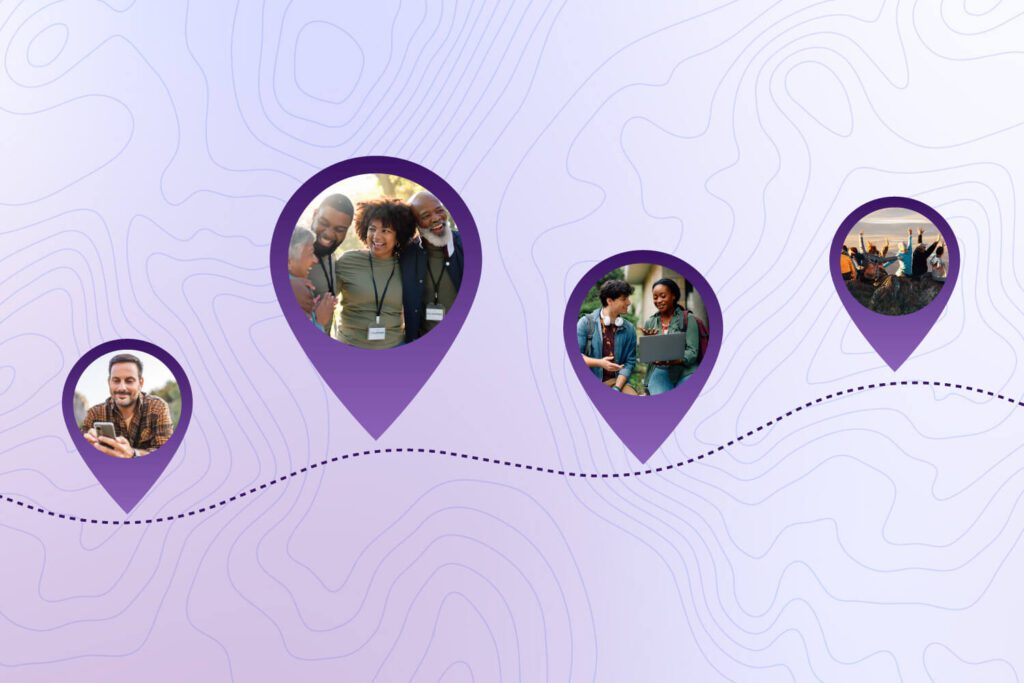As voter turnout continues to be a major priority for local and national elections, you may have seen a lot about GOTV. Even if you have a background in politics or organizing, however, you may not be fully up to speed on what the GOTV phenomenon is all about.
Not to worry! We’ll answer the most frequently asked questions about GOTV to help you get a full grasp of the concept. Once you know the basics, you’ll be ready to start advocating for the causes you are passionate about.
What is GOTV?
GOTV stands for Get Out The Vote, which is the final phase of a field campaign that aims to drive as many people to the polls as possible. GOTV can be conducted by a specific political campaign, a nonprofit advocating for a certain cause, or a nonpartisan group supporting general voter turnout. For organizers, the purpose of GOTV is to activate the voters that support your campaign or cause and get them down to their local polling place to cast a ballot on Election Day. Basically, it’s the process of turning abstract support into real, tangible votes.4 frequently asked questions about GOTV
When is GOTV conducted?
GOTV doesn’t happen on one specific day, but rather over the whole period in which voting occurs—in other words, from the second early voting begins to the last minute before the polls close. As the last stage of a field campaign, it falls after canvassing to gauge support in the electorate, registering supporters to vote, and persuading voters on the fence to join your camp.What do you do during GOTV?
The simple answer is you get out into the community and encourage people to vote on an individual basis. There are a number of GOTV strategies you can use, but the most common involve calling and canvassing door-to-door to ask registered voters to commit to vote. Typically this includes:- Asking voters to make a plan to cast their ballot.
- Providing would-be voters with information on early voting, absentee ballots, and how to locate their polling location.
- Offering assistance to help voters get to their polling location.
- Providing transportation assistance.
- Monitoring polling locations to make sure that everyone is able to exercise their right to vote.
- Last-minute calling and door-knocking efforts.
Where does GOTV happen?
Everywhere! From urban neighborhoods in Brooklyn to snowy, rural areas in Alaska, GOTV happens throughout the election cycle and continues until the polls close nationally. Anywhere an election happens, GOTV can take place. In any area of the country, GOTV happens door-to-door at voters’ houses, at polling stations on Election Day, and in campaign offices.Why is GOTV important?
In the last national election, voter turnout was 46.9%. In local elections, turnout is often much lower, making it difficult to push your advocacy goals forward. Whether your goal is to elect a candidate or to further a cause like climate change remediation or gun regulations, you need voters to show up, and GOTV is what turns voices into votes. In the critical final moments of a campaign, GOTV can make the difference between victory and defeat.The bottom line
With dedicated canvassers, the right resources, and motivation to support your candidate or cause, GOTV can make a pivotal difference in getting voters to the polls. If you’re interested in taking part and learning from the experts before launching your own GOTV efforts, consider volunteering for a local candidate. Or, get involved with an organization that’s engaged in GOTV this election cycle, such as NextGen America.
Ready to Get Started?




